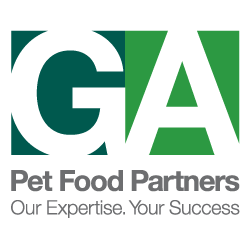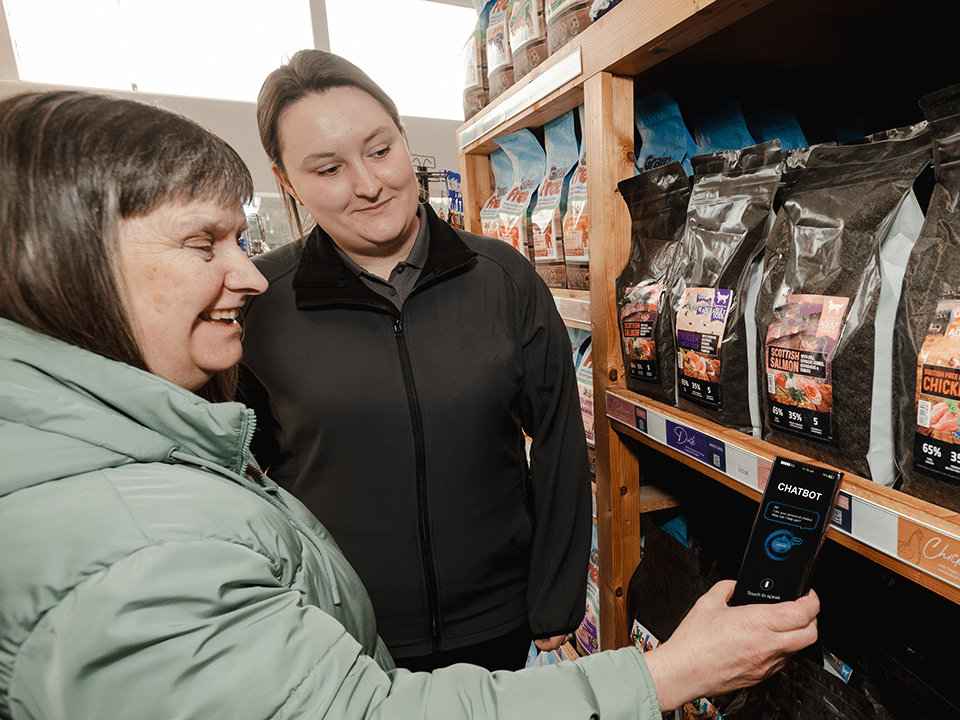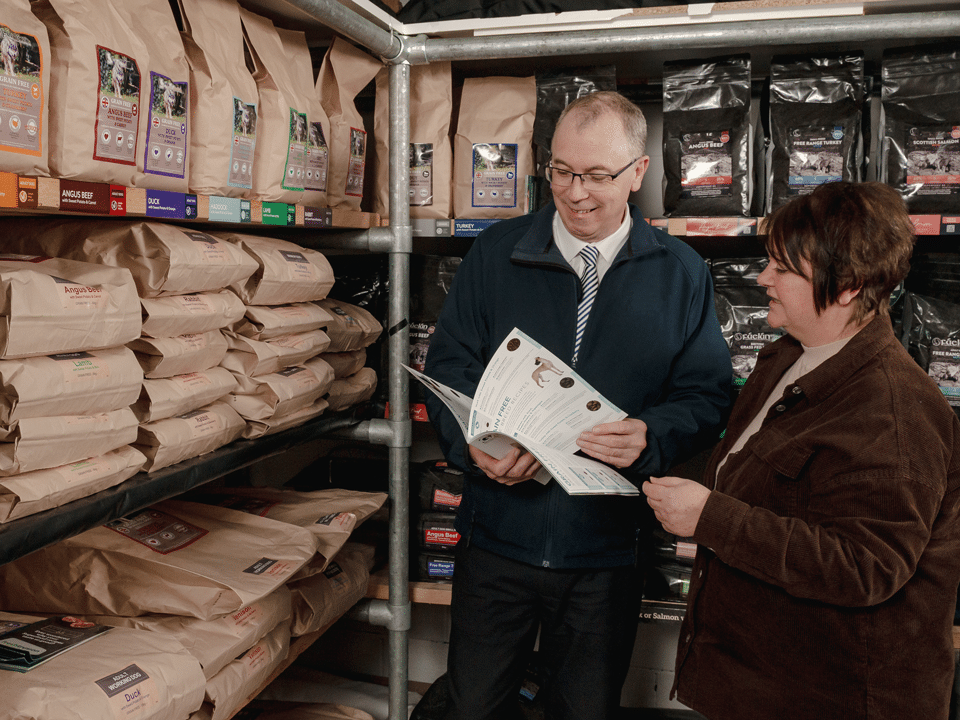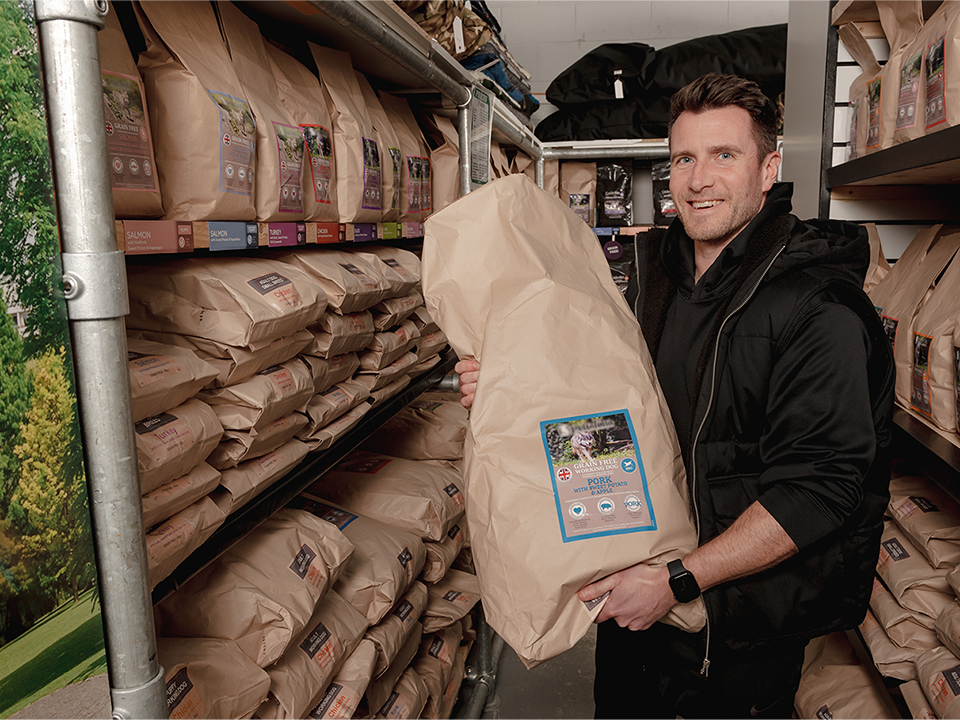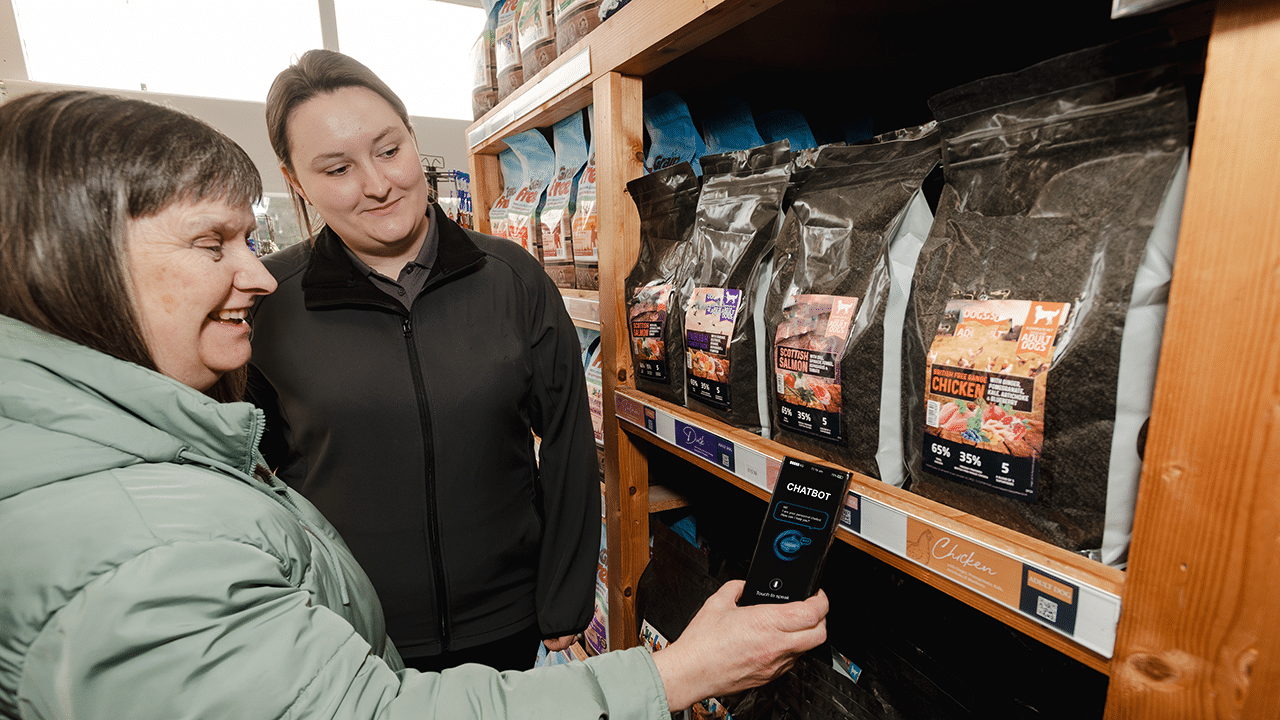
You may have heard the letters “AI” or “AI Technology” frequently used in the media. From opening your phone with Face ID to interacting with chatbots to solve a problem, the use of AI technology is increasing. But is this just a buzzword? Or will it be something that changes aspects of life forever? This Knowledge Centre article will delve into what AI is, how AI will develop, and the pros and cons of AI in pet retail.
AI Defined
First things first, what is AI? AI is an abbreviation for Artificial Intelligence. According to the Oxford Dictionary, AI is defined as the theory and development of computer systems able to perform tasks usually requiring human intelligence, such as visual perception, speech recognition, decision-making and translation between languages. While AI has existed for a while, recent advances in technology and data have meant that AI technicians can build systems capable of completing complex tasks.
AI will develop over time, not just for humans on a personal level but for businesses too. Companies use AI more frequently than you realise. From marketing to customer service and product design, the possibilities are endless. But how can pet retailers utilise AI? And what are the pros and cons of AI in pet retail?
How can AI be utilised in Pet Retail?
We traditionally know pet retailers for offering a unique shopping experience, being knowledgeable about their products, understanding pet needs, and much more. Many pet retailers may wonder if AI can assist them in enhancing their offerings to their customers. This section of the article looks at how AI can benefit pet retailers.
Increased efficiency
A considerable advantage of AI is making tasks more efficient while adding value. AI is driven by processed information and data to find the fastest way to complete jobs. Not only will this help to improve the business’s speed, but it will also minimise any human errors that may appear. Dave Walker, a Digital Marketer, states, “AI is not just the accuracy of the data but how quickly you can get it to make decisions”. As a pet retailer, an example of how AI may increase your efficiency is stock management. AI can predict future demand based on historical sales data and trends to forecast what products you need in your shop and when. This will allow you to maintain an optimal inventory and ensure you don’t run out of key lines or have too much stock of poor sellers.

Long-term cost savings
Initially, for some AI technology, it can be costly to implement. However, over time there can be many cost-saving benefits. As discussed above, if you have a more efficient business, you can ultimately satisfy your customers’ needs more effectively. For many pet shops, budgeting and spending wisely is key to success. Often to assist in promoting their shop offering, pet retailers hire professional photographers, graphic designers and animators. This can come at a cost and occasionally not have the desired effect that was initially set out. With AI, creating images and assets by providing your requirements is now possible. The AI will then create suitable photos based on your keywords to aid your promotional material, both physically and online. A win-win for pet retailers looking to save money.
Content Creation
At times it can be hard to come up with ideas for content. Here is where AI can step in and provide the inspiration you require, whether for blog articles, social media posts, newsletters or any other content you’re creating.
Brick-and-mortar pet shops often have an online presence with websites or social media channels to help drive sales in-store. A fantastic way to showcase your expertise as a pet shop is to have an online blog on your website. Using an AI chatbot tool can help to brainstorm a list of topics; all you need to do is provide it with context, and it can help to give you ideas.

Meanwhile, regarding social media posts, AI tools can brainstorm post ideas, hashtag suggestions and image captions in seconds. In addition, it can also analyse existing content and use this to write engaging social media posts.
Whilst providing inspiration, it can also create the blog content for you in a style that you require/determine. An added benefit of using an AI tool to write all of the blog content is the amount of time it saves. Firstly, you don’t have to write the content; it can be done in under thirty seconds by AI. Secondly, the amount of time to research a subject will be heavily reduced. It’s important to note that once the AI creates the content this should be checked to ensure that the tone of voice is correct.
Identifying trends in the market
All businesses will generate data regardless of size. Large corporations hire data analysts to provide valuable insights and identify improvement areas. However, with the increasing presence of AI, we are seeing larger businesses using AI to assist them.
For many pet shops, hiring data analysts is not an option due to the significant costs that come with this. Currently, many pet shop owners will identify trends in the market by reading industry magazines. With the increasing presence of AI, pet retailers can use this to analyse their own data and help with forecasting and predictions.
What are the risks of AI in pet retail?
As you have read, AI has many benefits in pet retail. But there are also risks involved when looking to utilise the technology. This section will focus on the challenges of AI in pet retail.
Lack of Authenticity and Emotion

Regarding efficiency, AI is a fantastic tool that can aid any business. However, it lacks authenticity and emotion when it comes to producing content. AI bases its decisions on what has happened in the past and cannot create new ideas. When making decisions as a human, we will factor in emotions. Conversely, AI can’t do so and only makes decisions based on parameters that have been provided. When it comes to pet retailers, authenticity and emotion are crucial. Interacting with the community is a big part of what makes the pet shop successful, and with that comes feeling. Often pet store owners have a great passion for what they do and look to help the needs of each customer that enters the shop.
Loss of Brand Identity
Building a good brand identity plays a significant role in differentiating your business from the competition in the market. It visually represents the core values and communicates what the pet shop brand is about. Many pet retailers use AI to assist with content on their websites, social media, emails and newsletters. This can be beneficial because it can help to improve the speed at which the content is created. However, AI relies on data for content, meaning that the tone of voice and brand identity can become lost quickly. As a pet retailer, you want customers to connect with your brand and having lots of AI-generated can put them off. According to an AI-powered customer service platform called Tidio, only 36.9% of readers were convinced that AI-generated text was created by a human. This shows that there is still some way to go before it can gain people’s trust.
Changes to job roles
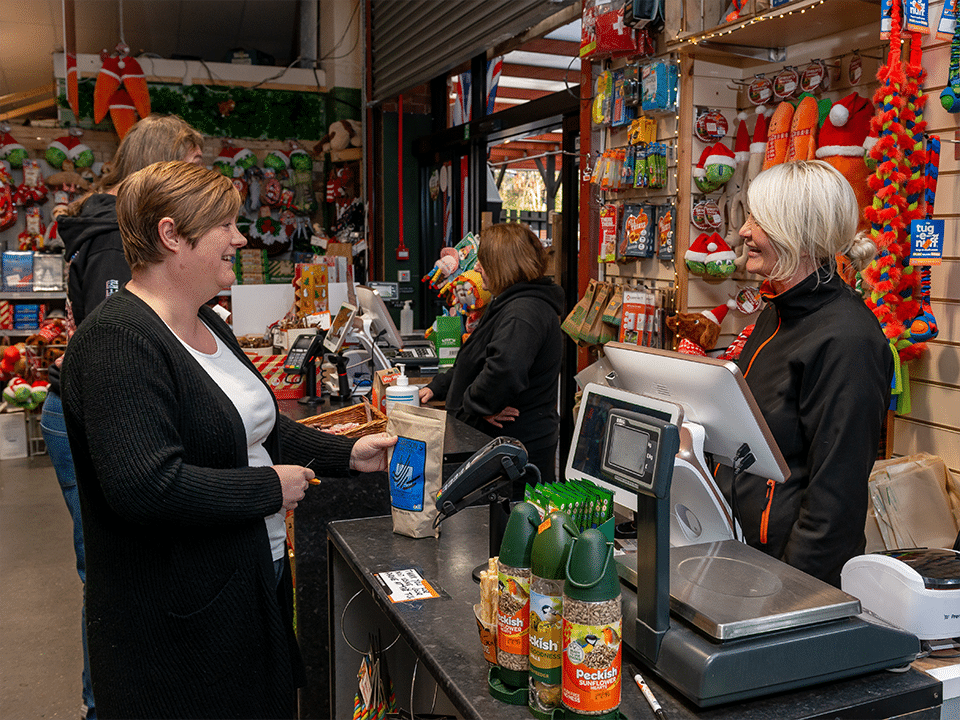
As AI develops, so does the increase in automated tasks. Inevitably this will lead to changes in job roles for humans. Some analysts have warned that AI may replace aspects of the labour market, which may be true for specific job roles in the future. However, the development of AI is a fantastic opportunity for humans to focus their efforts elsewhere or learn new skills. An example of how AI may change the job roles of pet retailers is the systems in which customers purchase their products. Traditionally, customers have been served by a shop worker at the till. As we have seen in supermarkets, self-checkouts may become the future for pet retailers if they implement AI.
Ethical concerns
A big concern for many with the use of AI is ethics. As highlighted in this article, AI relies on data to perform; this can sometimes include the personal details of people being stored. In addition, there are ethical concerns related to the nature of the content AI creates and the data it pulls. We have always relied on humans to use their judgement regarding privacy. AI, on the other hand, may see simply as content to post without considering any implications that may occur. AI is not concerned with people’s data protection, only with using the data to fulfil a task. Regarding pet retailers looking to implement AI, the customers’ data privacy is paramount.
Summary
To summarise, AI will develop in modern society. Believe it or not, we already use AI more than we think, from opening your phone with Face ID to interacting with chatbots to solve a problem. Even Spotify, Amazon and Netflix use AI extensively to help with search or personalised recommendations. AI will only develop over time, not just for humans on a personal level but for businesses too.
For pet retailers, there are several ways that they can utilise AI to assist them with the day-to-day running of the business.
Firstly, AI represents an excellent opportunity to improve efficiency because it can conduct a specific task much faster than a human. Secondly, AI can save costs for pet retailers in the long term because they can minimise the amount of work that they outsource to photographers, graphic designers, blog writers etc. In addition, AI is great for content creation. Many pet retailers have blogs on their websites or social media; if you require ideas, this can be helpful. Without a doubt, another pro of AI is to identify trends in the market. Pet retailers can use AI to monitor if there has been an increase in sales and apply effective stock management tools.
Whilst AI has many advantages, there are also some disadvantages that pet retailers should be conscious of.
When it comes to producing content, it can be very robotic and lacks authenticity and emotion. This is a significant consideration for pet retailers because building a community is a large part of the shopping experience. Loss of brand identity is another challenge because AI relies on data for content, meaning customers may find it hard to connect with your brand without emotion. Some analysts believe that AI will lead to changes in job roles; this could be true for pet shops that look to implement self-checkout tills instead of a worker at the till. Finally, many ethical concerns surround AI, mainly regarding the storage of data and how this is used to form AI content.
References
Rajnerowicz, K. (2023, July 6th). Human vs AI Test: Can We Tell the Difference Anymore? Retrieved from Tidio: https://www.tidio.com/blog/ai-test/

Matthew Aiken
Marketing Communications Expert
Matt graduated in 2017 with an undergraduate degree in Business & Management. Here he discovered that he had a passion and interest in Marketing. In his spare time, he enjoys anything fitness related and getting outdoors. He also has a French Bulldog called Harley and a Persian cat called Bonnie Blue.
You may also like...
Article written by Matthew Aiken
The pros and cons of AI in pet retail
You may have heard the letters "AI" or "AI Technology" frequently used in the media. From opening your phone with Face ID to interacting with [...]
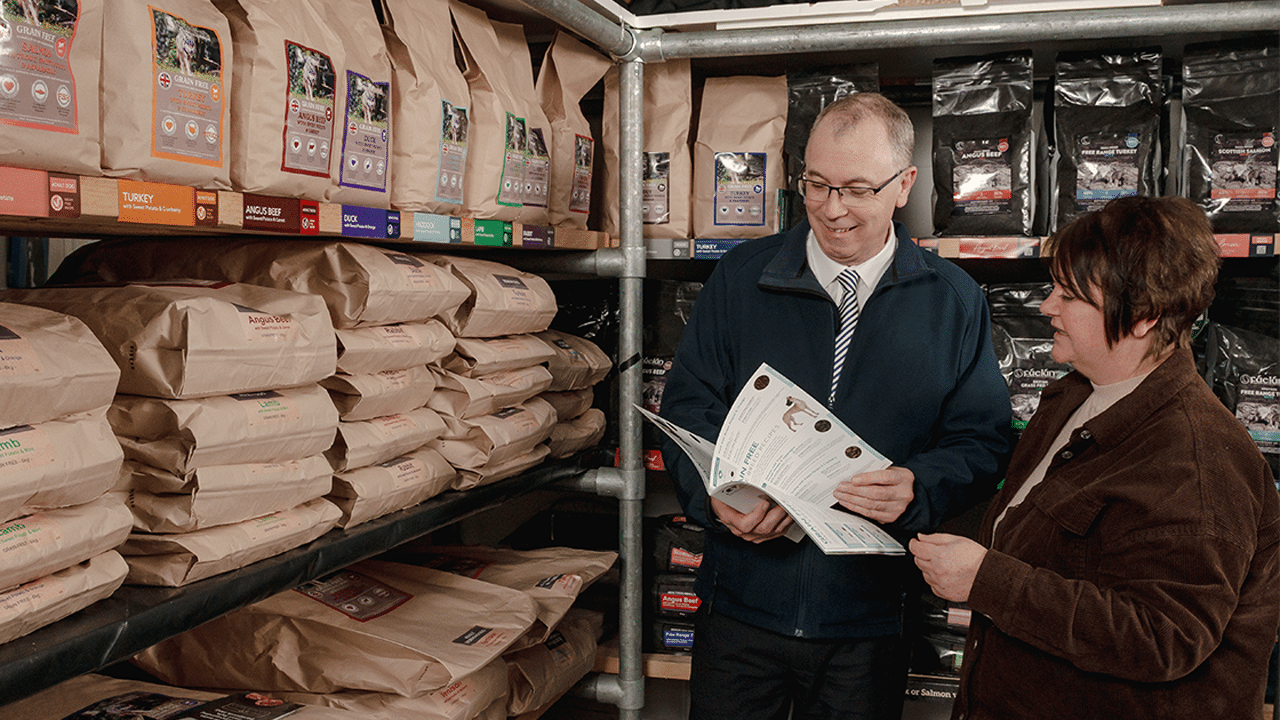
With the number of avenues people can shop for their pets increasing, pet shops must find effective ways to increase brand awareness, retain customers, and gain new ones. Planning a marketing campaign for your pet shop is a great way to do this. A marketing campaign can be conducted both in-store and online. In-store marketing campaigns drive traffic to the store and increase sales through assets such as signage and printed materials. Online marketing campaigns promote products and services via digital platforms such as social media. However, the two can work hand-in-hand and, if utilised correctly, can help a business develop its sales.
This article will focus on planning a successful marketing campaign for your pet shop. With information about how you can identify objectives for a campaign, how budgeting is a crucial factor, and why target audience and messaging will determine the success of your campaign. In addition, tips on implementing your marketing campaign and measuring the results.
The purpose and objectives of your campaign
At the start of any marketing campaign, you must identify the purpose. Without this, your campaign may not get the desired results and become lost. Why would you like to run the campaign? What would you like to accomplish for your pet shop? Below are a few simple ideas that you may have for your pet shop to build the basis of your campaign.
- Increase your pet shop’s brand awareness
- Boosting the average spend per customer in your shop
- Generate more sales of a specific product or type of product
- Build your customer base
- Advertise an upcoming event in your store
- Develop your social media presence
Although basic, these are just some building blocks for planning a marketing campaign for your pet shop. As you begin to develop your campaign, you must set objectives. This differs from the purpose of your campaign because objectives are more specific. A standard method to set an objective is through a SMART objectives strategy. This stands for Specific, Measurable, Achievable, Relevant and Time-Bound and allows businesses to create, track and accomplish objectives.
Budget
Once you have decided on the purpose and objectives, it’s time to review your finances and agree on your spending. Budgeting plays an integral part in a campaign, so you need to think wisely about what activities will have the best returns for your campaign. It is very easy to spend money on different marketing avenues, which may hamper the campaign’s success, so as a pet shop, it is best to focus on a few with a campaign. For example, it is easy to overspend on your shop’s number of leaflets and materials. Alternatively, paying for pay-per-click advertising can quickly consume your budget if it is a digital marketing campaign.
Target Audience
For many businesses, understanding their target audience can be challenging as there are a variety of customer types that could be sold. Therefore, when planning your marketing campaign, you must know your target audience. Having target personas (a fictional profile of a person who represents your target audience, based on specific characteristics) for your pet shop is an excellent method to discover your target audience.
When it comes to the target audience of your marketing campaign, the first step is to realise what stage of the buyer’s journey your campaign is targeting. Are you trying to bring in new customers? Or are you wanting to gain insight from your existing customers? Will your brand’s campaign be recognised? Or are you introducing a new identity altogether? These questions will influence your marketing message, which will change depending on whether your target audience is in the awareness, consideration or decision stage. Even though your campaign may cater for a number of your target audiences, it is crucial that you have a specific audience in mind.

Building your target audience
To help build your target personas, you need to understand their interests and touchpoints. For example, for a pet shop owner, ask yourself questions such as:
- What type of content will get my audience’s attention?
- Do they engage better with certain avenues of information, such as leaflets or social media?
- What kind of problems do they have that your product, service or brand could solve?
- What is their income, and can they afford your product or service?
Narrowing down your target audience like this will bring the best results at a cheaper cost for your campaign. An example of a target audience for a campaign where you are trying to convert a customer from a brand of dog food to your own brand of dog food could be:
- Dog owners aged between 21-45 that live near your shop have purchased a premium branded product in the last month.
Your Campaign Message
It’s time to get creative and plan the messaging for your marketing campaign. This a huge deal because it will attract customers to your pet shop. The messaging needs to focus on your customer and satisfy their needs to be effective. Ensure you know your customer’s problem and that your messaging has a clear path to the solution.
Your campaign message also needs to trigger an emotional response from your customers. Believe it or not, 95% of purchasing decisions take place in the subconscious mind, according to Harvard professor Gerald Zaltman.
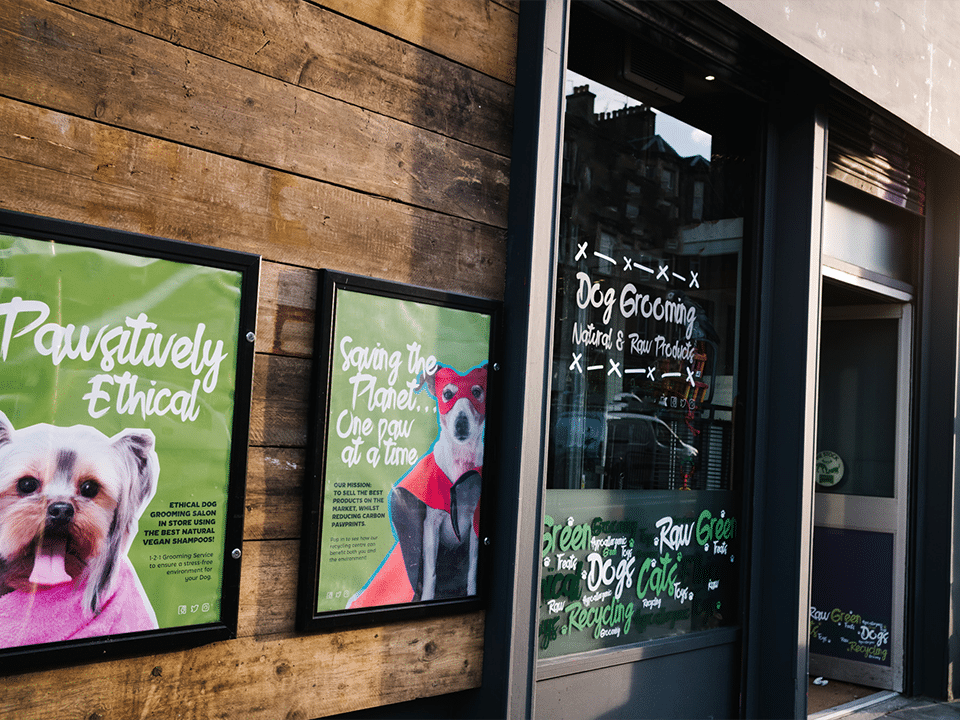
Creating an emotional connection in your messaging is crucial in enticing people into your shop, especially when the average person is susceptible to seeing up to 4,000 to 10,000 advertisements daily. Your brand needs to stand out!
In terms of your pet shop marketing campaign messaging, you need to make sure that it is consistent in-store and digital or your customers may become confused.
Methods to reach your customers
Choosing the correct methods in which your marketing campaign will run will be dictated by all of the points raised in this article. What method is your target audience most likely to use and be susceptible to your campaign? How much of your budget will you spend on each method?
In modern society, there are many avenues that pet shops can use as part of their marketing campaign, so it is essential to utilise just a few methods. As a pet shop, you may want to utilise the following channels for an in-store campaign that promotes a brand-new product.
Promotional Materials
Utilising promotional materials such as leaflets and posters is an excellent tool for an in-store marketing campaign. Materials like this make your shop look visually appealing and provide your customers with valuable information about your products. These materials can be the difference between a customer purchasing your products or not. However, a disadvantage of using this form of communication as part of your marketing campaign is that customers tend only to view the information once and then dispose of it, which may prove costly if it doesn’t lead to sales.
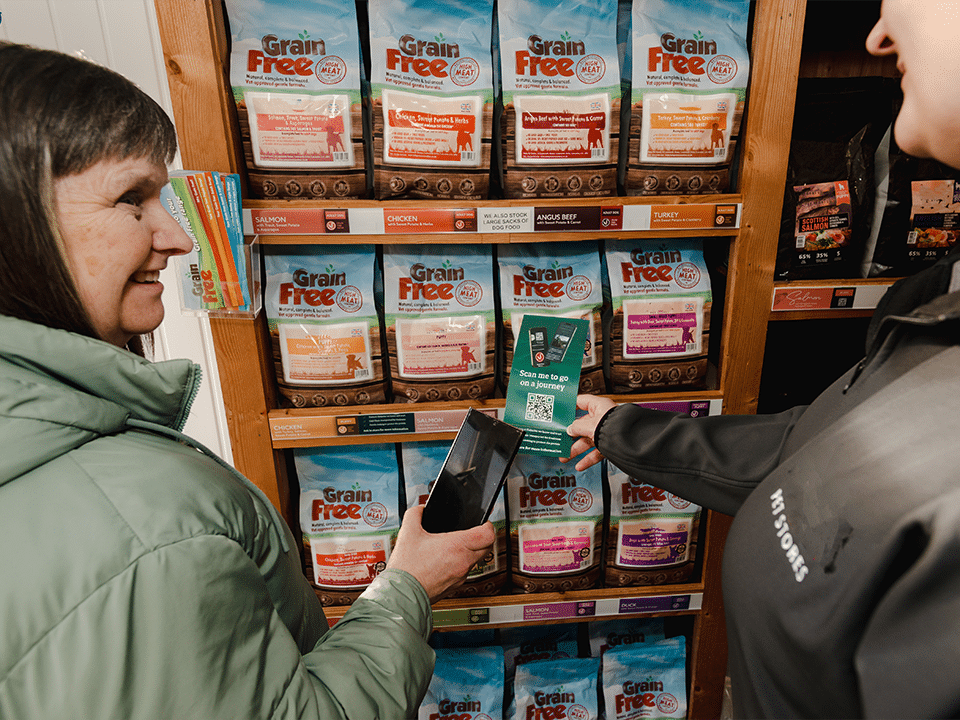
Direct Mail
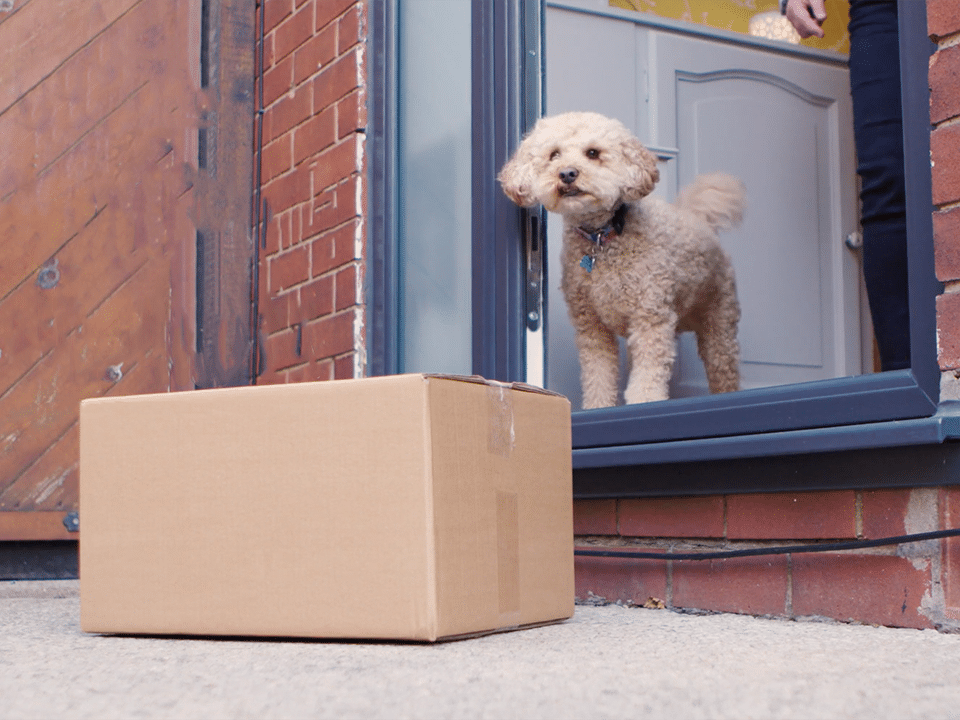
This is another fantastic method for your marketing campaign and promoting a new product. This form of communication involves sending your promotional materials directly to the customer’s address to gain interest in your products. An advantage of using this as part of your marketing campaign is it is highly targeted so that you can target specific customers with this. In addition, direct mail is tangible, and customers are more likely to take notice of physical mail rather than an email that could end up in their spam folder. Although a fantastic method to use in your campaign, it can also eat into your budget. Depending on the size of the mailing and frequency, this can eat up how much you plan to spend.
Social Media
Social media has changed the world and marketing campaigns for all types of businesses. With approximately 4.26 billion active social media users worldwide, there is a huge opportunity to promote your pet shop. Social media marketing campaigns can help increase the awareness of your brand because it leaves an imprint on the minds of your customers. According to SCORE, 77% of small businesses use social media to help drive awareness. It is also a fantastic opportunity for pet shops to advertise what is happening in their store and drive new and existing customers to come and explore what’s new.

Although it has many benefits, social media does have its downsides. When looking to advertise to customers, there is a cost to it, and each click that the advert receives will cost you money with sometimes little return on investment. Before embarking on a social media spending spree, be sure to do your homework. Once again, it is crucial that your target audience can be reached using this avenue. Posting a few times now and then will not get your return on investment. There needs to be a clear, thought-out plan.
Implementing your marketing campaign
Now that you have planned your marketing campaign, it is time to implement it. If everything has been designed to detail, then this should be easy. A decisive factor is the colleagues working in your pet shop. Make sure that they are on board with the marketing campaign and understand the intricacies of it. In addition, you should get your team to help plan the marketing campaign. Finally, your team may have some ideas that you can integrate into your campaign to really get their “buy-in”.
Measure and analyse
When your marketing campaign is complete, assessing the successes and areas to improve is essential. Measuring and analysing your campaign data can provide insights into your audience, marketing methods and budget. It will also help with planning future marketing campaigns.
The best way to realise if your marketing campaign was a success is by returning to your objectives and realising if you met them. If you did, then that is fantastic. If not, then you need to understand why?
For example, if your objectives were to increase the number of customers visiting your pet shop by 20% over the next three months, any increase in customer traffic may be seen as successful. However, there is a difference between a campaign that works and a worthwhile campaign.
A worthwhile campaign provides a return on investment proportionate to the time and work put into it.
Summary
To summarise, as the number of ways for pet owners to shop increases, pet shops must think of ways to drive customers in-store. A fantastic way to do this is by running a marketing campaign. However, for a marketing campaign to succeed, planning is required to ensure that the campaign is successful.
The first stage when planning a marketing campaign involves having a purpose and setting objectives. A simple way to do this is using a method called SMART objectives which allows businesses to create, track and accomplish objectives.
After this stage of planning is complete, it’s time to review your finances and set a budget for the areas you will be spending on the marketing campaign. When budgeting for your campaign, you must think wisely about what activities will have the best returns for your campaign. Spending money on different marketing avenues is very easy, which may hamper the campaign’s success.
One of the most important parts of planning your campaign is knowing your target audience. If you are targeting the wrong type of customer, it will be tough for your campaign to succeed. Having a fictional profile of a person who represents your target audience based on specific characteristics of your pet shop is an excellent method for discovering your target audience. After defining your target audience for your campaign, it’s time to create your campaign’s messaging and methods to reach your customers.
After this is finalised, you can implement and ensure everybody working in your pet shop is on board. They will play a vital role in the success of your campaign.
Finally, it is crucial to review the success or not of the campaign. Data is essential to review the success and this should always be related back to the original objectives.
References
Mahoney, M. (2003). The Subconscious Mind of the Consumer (And How To Reach It). Harvard Business School.
Score. (2018, August 30th). 77 Percent of U.S. Small Businesses Use Social Media for Sales, Marketing and Customer Service. Retrieved from Prnewswire: https://www.prnewswire.com/news-releases/77-percent-of-us-small-businesses-use-social-media-for-sales-marketing-and-customer-service-300704921.html#:~:text=77%20Percent%20of%20U.S.%20Small,Sales%2C%20Marketing%20and%20Customer%20Service
Simpson, J. (2017, August 25th). Finding Brand Success In The Digital World. Retrieved from Forbes: https://www.forbes.com/sites/forbesagencycouncil/2017/08/25/finding-brand-success-in-the-digital-world/?sh=653e1f42626e

Matthew Aiken
Marketing Communications Expert
Matt graduated in 2017 with an undergraduate degree in Business & Management. Here he discovered that he had a passion and interest in Marketing. In his spare time, he enjoys anything fitness related and getting outdoors. He also has a French Bulldog called Harley and a Persian cat called Bonnie Blue.
You may also like...
Article written by Matthew Aiken
The pros and cons of AI in pet retail
You may have heard the letters "AI" or "AI Technology" frequently used in the media. From opening your phone with Face ID to interacting with [...]
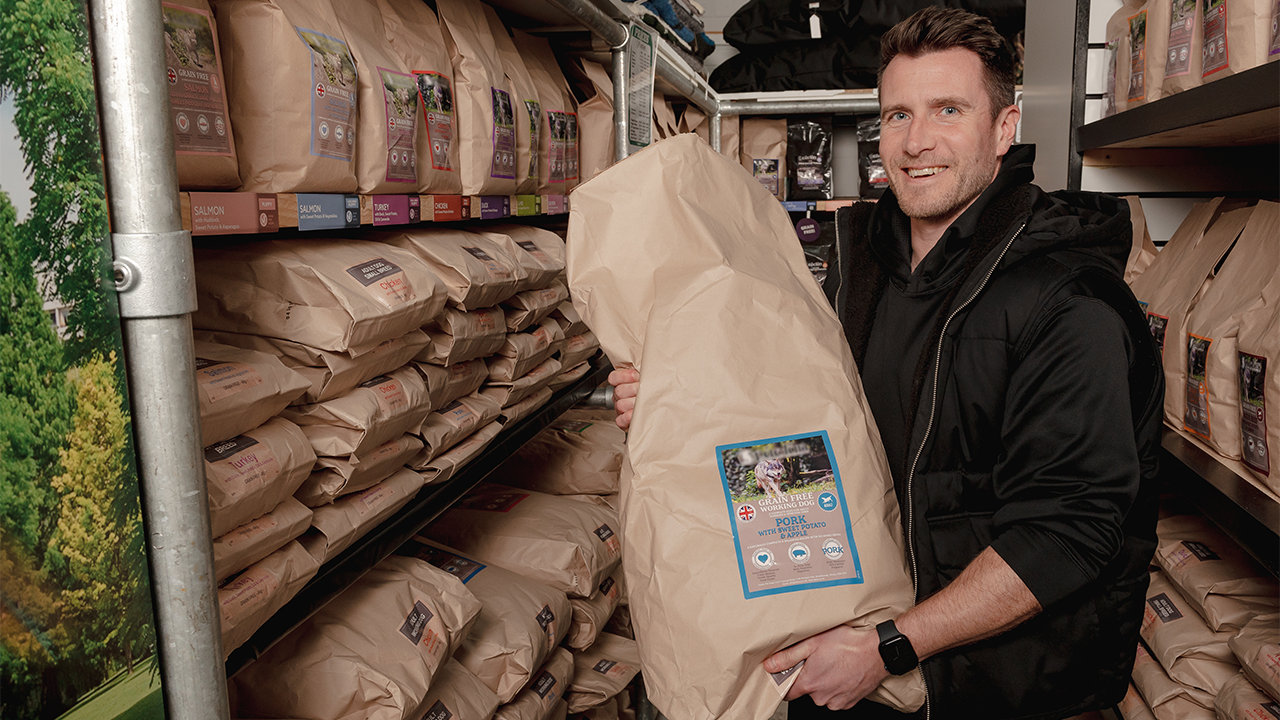
As the cost of living crisis hits various industries, the pet sector appears to be adapting and staying strong. However, this doesn’t mean that everyone running a pet business has not been affected. For example, the increase in online pet retailers and grocery stores has impacted pet owners’ purchasing behaviour. As a result, pet shops have had to alter their selling techniques to retain customers by showcasing the benefits that only a pet shop can offer a customer. In addition, the spending potential of pet owners is expected to be long-term – with each new pet likely to be a part of the owner’s household for a decade or more, the stakes to acquire their business are high. According to a well-known pet food business, customers typically spend less than £200 in their first year. However, this amount doubles in the second year to £400 and reaches around £700 by their fifth year. In addition, some customers spend nearly £1000 a year.
This highlights the needs for pet shops to not only retain customers but also, crucially attract new ones.
Understanding your customers
When retaining customers, one of the first things you must do is understand them. This should be at the heart of every pet shop’s business strategy. Without understanding your customers, it can be hard to market your pet shop in a way that appeals to them. According to Red Point Global, 74% of consumers believe brand loyalty is about feeling understood by a business. As a result, 64% of consumers would instead purchase a product from a brand that knows them. In addition, 34% would spend more money on the product to do so (Ackerman, 2022).
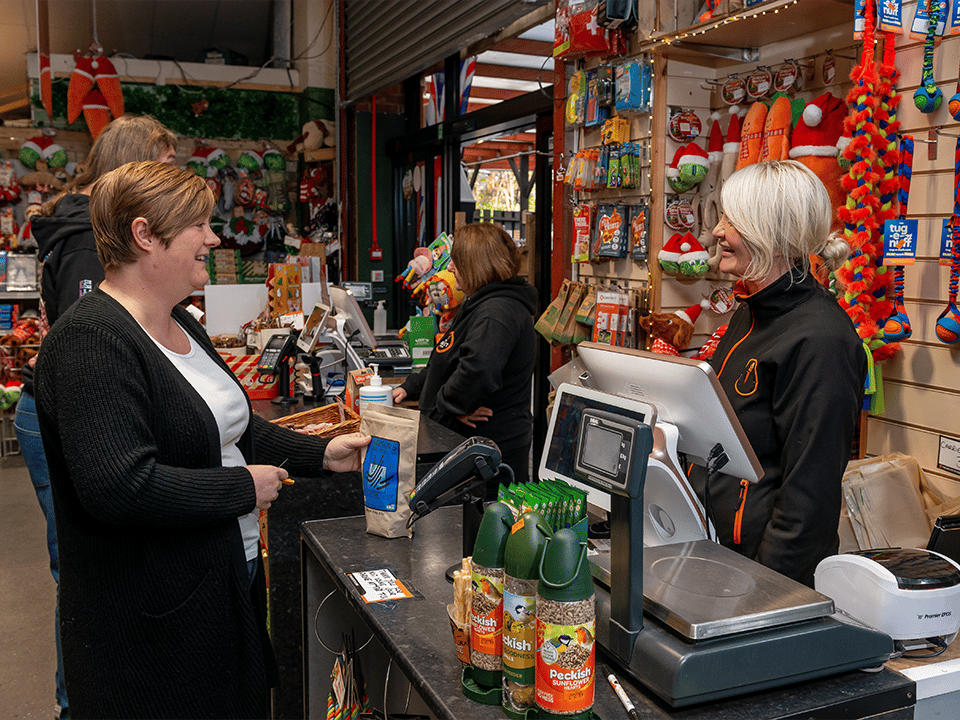
According to Gallup, engaging with customers is the emotional connection between your customers and you and is key to the organic growth of a business and retaining customers. Conversely, if your customers don’t see any appeal, your pet shop risks surviving based on a price relationship alone and may struggle to gain and maintain them.
Types of customers
Customers are crucial for all businesses to survive and can be categorised by type. Below are several different types of customers to account for when deciding on your customer retention strategy.
Loyal Customers
This type of customer is a pet shop’s dream and should be a top priority to appease. They are regular customers who tell others about your business and purchase products over an extended period. According to Marketing Metrics, the probability of selling to an existing customer is 14 times higher than the probability of selling to a new customer (Rioux,2020). They also contribute to a significant portion of revenue for most businesses. A fantastic way to keep retaining loyal customers is to obtain feedback from them. This will ultimately help your pet shop to develop and grow.
Impulse customers
Impulse customers are an attractive type of customer for pet shops because they are easier to upsell to. In addition, this type of customer buys products spontaneously, which is triggered by impulse. They often go into a pet shop without their hearts set on one product. This category of customer usually responds to recommendations and offers. This is an excellent opportunity to display your expertise and upsell your products as a pet shop business. Furthermore, if they are impressed with the products you recommend, they will be more inclined to return in the future.
Transactional customers
This group of customers are heavily influenced by price and discounts. They will often look for the best costings and even try to negotiate with you for a better price. In addition, they will look for seasonal and festive offers. It may be harder to retain transactional customers to your store if price is not your unique selling point. However, they can play a key role for your business by upbringing your business’s inventory and helping purchase products that you may be struggling to sell.
Need-based customers
This category of customers buys products based on a particular need. They often know the exact product they require and can be hard for you to upsell to. It is important to note that need-based customers can be quickly drawn to other businesses and will switch to substitute products easily. When it comes to the retention of need-based customers, you need to develop interaction and a positive bond with them. This is attainable by having personal communication with them. Red Point Global found that 32% of customers are willing to overlook a bad customer experience if they feel like a company is trying to understand them as a customer.
Methods to retain customers
As a pet shop, there are several methods you can implement to retain customers. A combination of traditional and digital strategies is an excellent place to start. This article section will look at ways you can implement these into your customer retention strategy.
Loyalty Schemes
Key to the retention of customers is loyalty schemes. Pet shops are primarily looking to let their customers stay loyal for longer. But they are also looking at ways to make them spend incrementally longer with their business. This is where a loyalty scheme can be hugely beneficial by offering special incentives to retain customers and encourage repeat business. An example of how a pet shop might offer a loyalty scheme is by rewarding its customers for purchasing specific products over time. So, for instance, they could buy nine bags of pet food and get the tenth bag free.
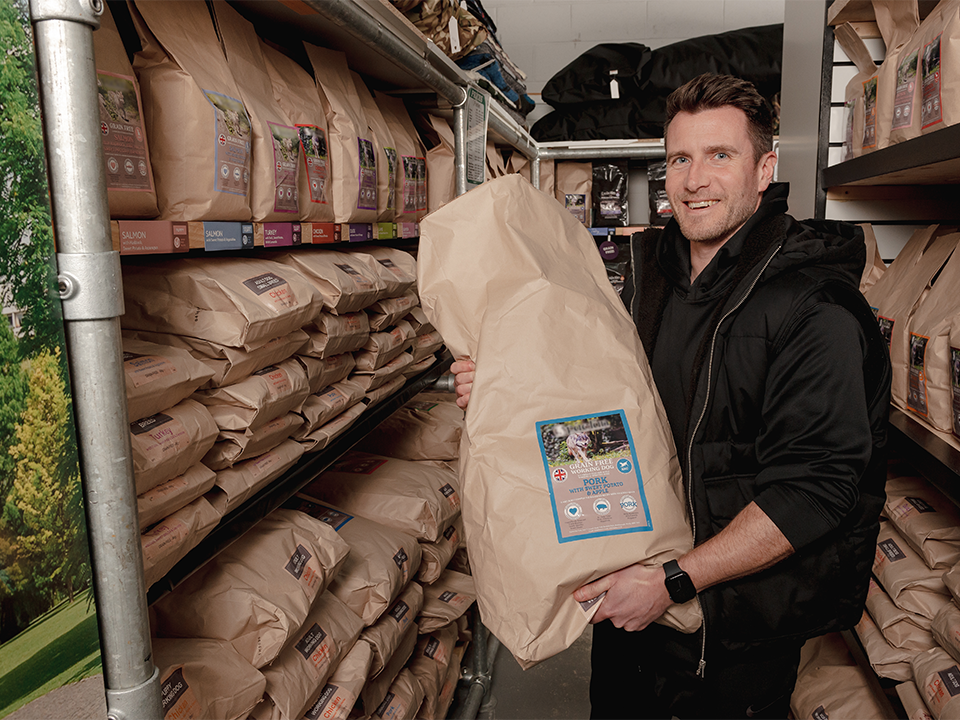
According to Nielsen, 84% of customers said they were more likely to stick with a business that offers a loyalty scheme. Whilst Accenture found that a member of a loyalty scheme will spend 57% more with a company than a non-member.
Subscription Models
Implementing a subscription model is another fantastic method to retain customers in your pet shop. This works by customers paying a weekly, monthly or yearly fee in exchange for products. As a result, this ensures that customers keep shopping with you. With a subscription model in place, you can acquire customers’ details and target them with the latest offers in your store. Subscriptions are beneficial to both businesses and customers; this is because customers like it for convenience, as it saves them time researching new products. Whilst businesses like subscriptions because they ensure that they consistently have stock in store. An example of how you, as a pet shop, can administer subscriptions to retain customers is by offering them the opportunity to purchase their weekly pet food repeatedly without the need to remember to purchase. Another advantage is that you will then be able to get their details and advertise the latest offers you have in-store.
Customer Service goes a long way to retaining customers
Customer service is one of many businesses’ most effective customer retention strategies. If a customer is satisfied with your service, they are more likely to remain loyal to your pet shop and continue to make repeat purchases in the future. In addition, they may spread the word with family and friends, which is a great driver of new business. According to Oracle, 86% of consumers will pay more for a better customer experience, and 73% want friendly employees or customer service representatives.
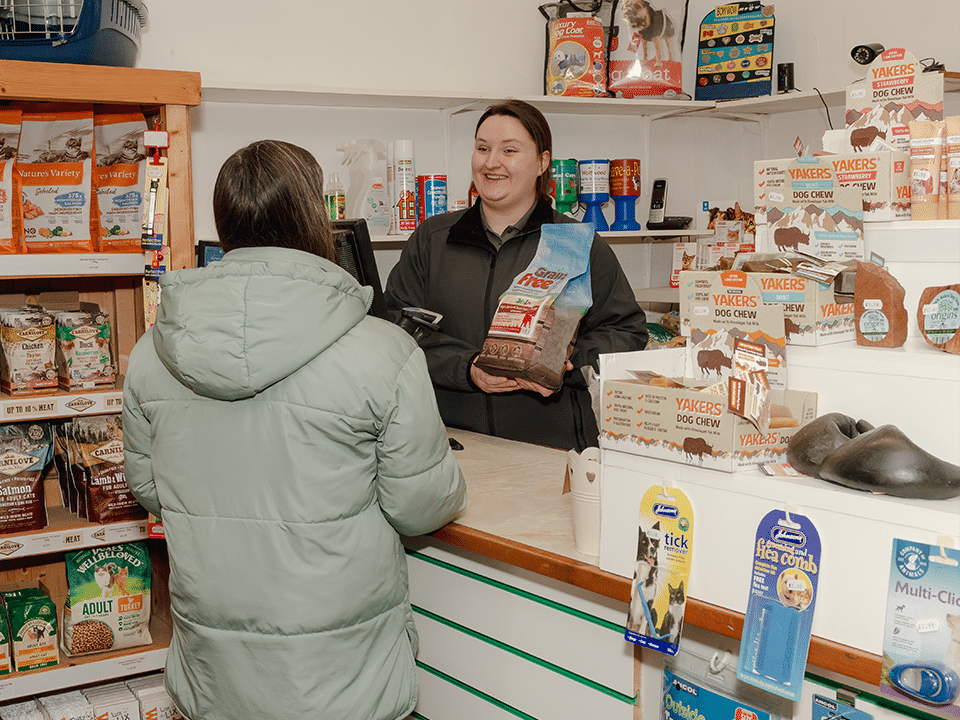
As a pet shop, your staff must engage with customers. Do they need help selecting a product? Do they need advice on a pet-related topic? All these things will help you build a relationship with your customers and leave an impression on them. Another way to showcase your customer service expertise is to ensure that your colleagues understand your pet shop’s unique selling point. If everybody has consistent messaging, the information you provide to your customers will be consistent and high quality.
User Generated Content via Social Media
User-generated content, also called UGC, plays a considerable role in retaining customers. Firstly it helps by increasing brand loyalty but also influences the purchasing decisions of other customers. A study shows that UGC influences the shopping decisions of 90% of shoppers. Not only is UGC free advertising for your business it encourages others to visit your store to see what you have to offer. For example, suppose you are a pet shop with a social media channel or website. In that case, you can differentiate against online retailers by posting pictures of customers’ pets in your shop interacting with your products. This is something that online retailers cannot offer their customers and increases your chances of a sale if the content is positive about your pet shop.
Product Offering
Your product offering is key to customer retention, with several factors to focus on. Firstly you need to consider whether your shop has something new to offer your customers. Can you get them to browse and purchase more products than usual? What is going to make them keep visiting your store? If you achieve this, it will generate more sales in the long run.
Another factor to look at is the merchandising of your store. This should be your number one priority and works hand in hand with product offerings, starting with ensuring that your shop is clean and has no empty shelves. The more you engage customers with your products, the more likely they will purchase and keep returning. In addition, if your shop has open shelves, customers will look elsewhere.
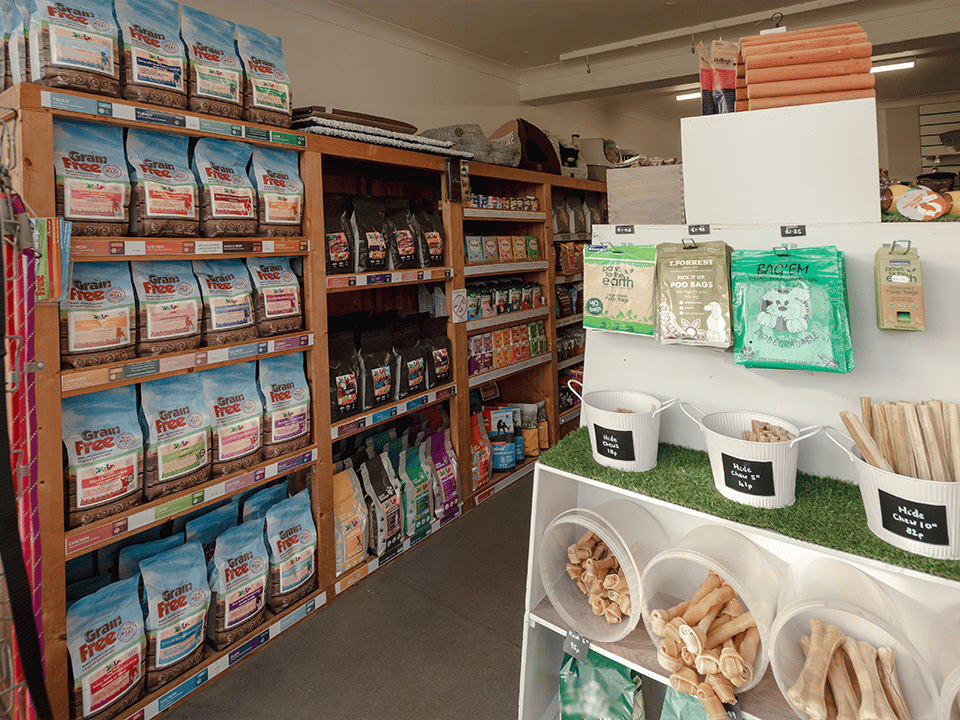
Summary
To summarise, pet shops must consider different ways to retain customers by showcasing products or services that can’t be found elsewhere. Retaining customers is essential to pet shops as the life span of pet owners’ shopping for one pet can be over a decade of recurring sales. This is supported by research showing that after year five of owning a pet, on average, owners will spend £700 compared to £200 in the first year of ownership. When it comes to the retention of customers, pet shops need to understand who they are. Customers can be segmented into categories, and each has its characteristics. For example, loyal customers are the easiest to retain because they have a relationship with your business and have purchased from you over an extended period. Other segments include impulse, transactional and need-based customers that can all be retained consistently but may need a bit of time to develop them to be loyal to your pet shop.
There are several methods that pet shops can use to retain customers. A common way to do this is through loyalty schemes in which customers are rewarded for purchases they have made. This could be anything from a customer purchasing X amount of pet food and getting a freebie to building up points that can be exchanged. Implementing a subscription model for your business has several advantages for you and your customers, including acquiring customers’ details and being able to target them with specific offers. Whilst for customers it is convenient for them as they spend less time researching about new products. Customer service is pivotal to the retention of customers because if a customer is satisfied with their experience, they are more likely to come back but also recommend you to others via word of mouth or user-generated content.
References
Ackerman, L. (2022, February 9th). 74 Percent of Consumers Believe Brand Loyalty is About Feeling Understood and Valued – Not Discounts and Loyalty Perks. Retrieved from Red Point Global: https://www.redpointglobal.com/press-releases/74-percent-of-consumers-believe-brand-loyalty-is-about-feeling-understood-and-valued-not-discounts-and-loyalty-perks/
Rioux, P. (2020, January 29th). The Value Of Investing In Loyal Customers. Retrieved from Forbes: https://www.forbes.com/sites/forbesagencycouncil/2020/01/29/the-value-of-investing-in-loyal-customers/?sh=23e4a9621f6b

Matthew Aiken
Marketing Communications Expert
Matt graduated in 2017 with an undergraduate degree in Business & Management. Here he discovered that he had a passion and interest in Marketing. In his spare time, he enjoys anything fitness related and getting outdoors. He also has a French Bulldog called Harley and a Persian cat called Bonnie Blue.
You may also like...
Article written by Matthew Aiken
The pros and cons of AI in pet retail
You may have heard the letters "AI" or "AI Technology" frequently used in the media. From opening your phone with Face ID to interacting with [...]
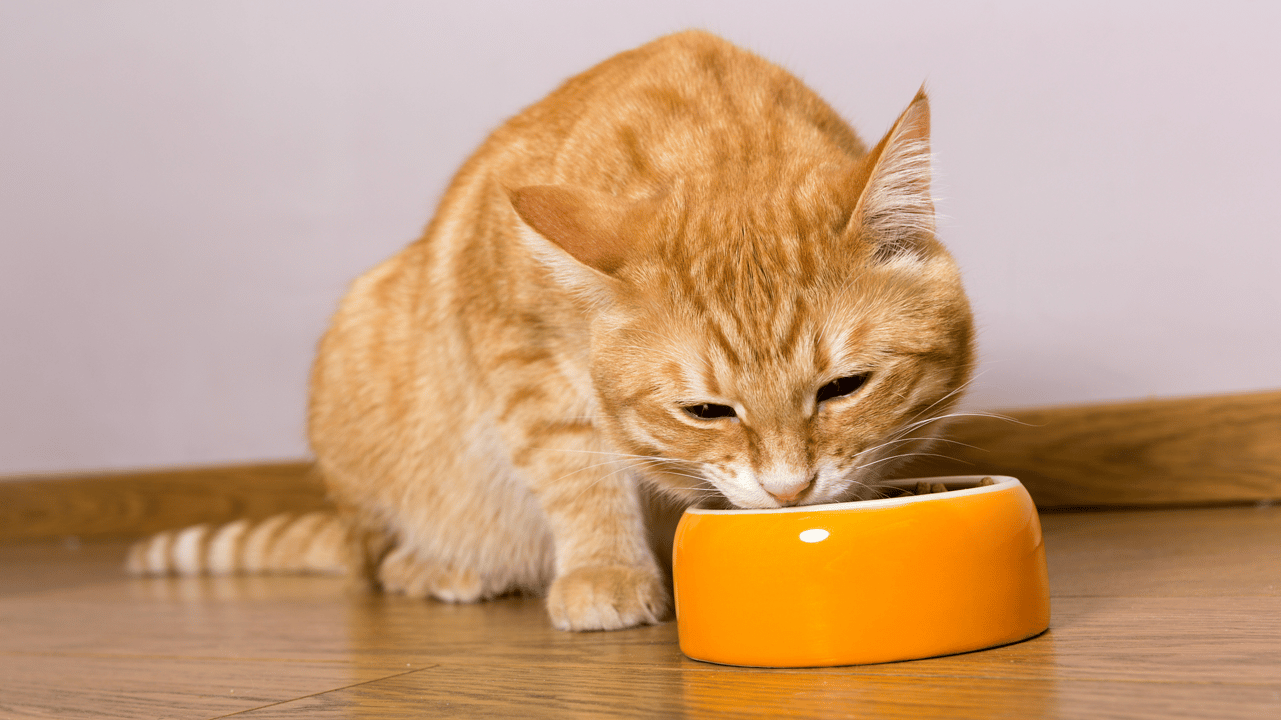
Cats require some nutrients that are not essential for other mammals. Many of these essential nutrients are found naturally in animal tissues, reflecting that cats have developed specialised nutrient requirements consistent with the evolutionary influence of a strict carnivore (MacDonald et al., 1984).
In addition, in feeding cats, the nutritional composition and the palatability of the diet are crucial. If unpalatable, cats will refuse to eat and consequently may become deficient in essential nutrients, which may develop into clinical conditions (Zaghini & Biagi, 2005). This highlights the importance of formulating and feeding highly palatable, nutritious diets for cats.
How much protein do cats require?
In the wild, cats would consume a diet of small animal prey, which provides a diet rich in animal protein containing all the essential amino acids (AA) cats require. Studies have determined that today’s pet cats, supplied with complete food in a bowl, have a minimum dietary protein requirement of 25 – 33 g/100g DM (dry matter), depending on their energy requirements (FEDIAF, 2021). This protein requirement is significantly greater than the protein requirement for omnivorous animals, such as dogs and reflects that cats are metabolically adapted to utilise protein/Amino acids to meet their metabolic needs, e.g., direct oxidation for energy and synthesis of glucose (gluconeogenesis) (Russell et al., 2002; Eisert, 2011).
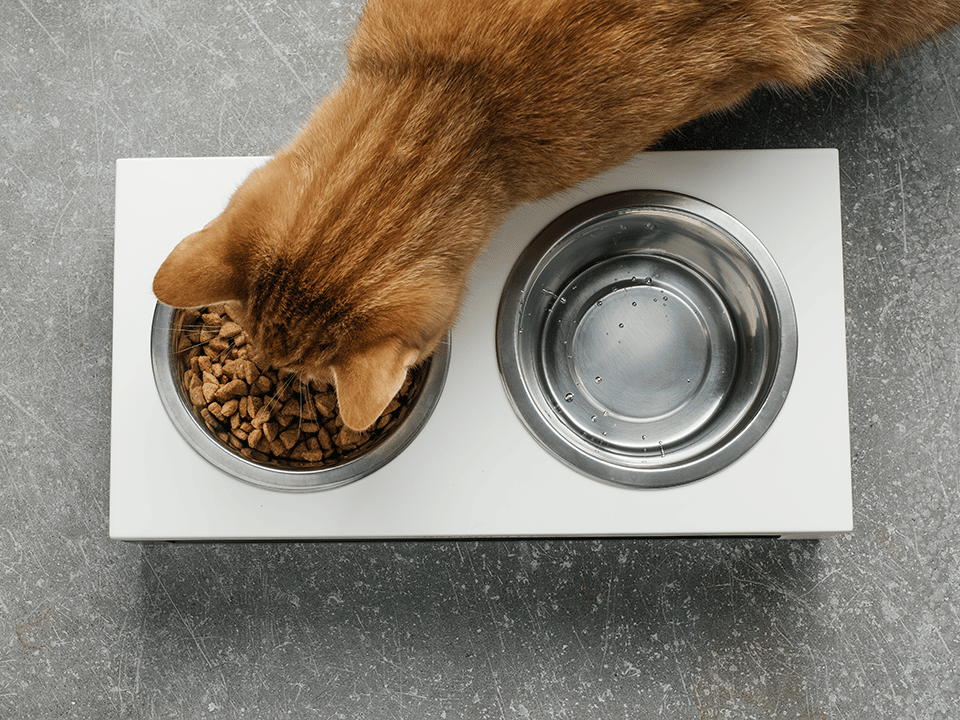
Which essential amino acids do cats require?
Amino acids are the building blocks of proteins. They are categorised as nutritionally essential Amino acids (must be supplied in the diet) or non-essential Amino acids (synthesised de novo in the body). Adequate supplies of essential Amino acids and non-essential Amino acids are required to maintain optimum health. When formulating a cat’s diet, it is important not just to consider the total protein content or protein digestibility but also to focus on the Amino acids profile of the protein source. Essential Amino acids must be obtained within the diet. Cats and dogs share ten essential Amino acids required in their diet (arginine, histidine, isoleucine, leucine, lysine, methionine, phenylalanine, threonine, tryptophan and valine) (FEDIAF, 2021).

Dietary arginine is significantly important for cats. Both cats and dogs show signs of hyperammonaemia when fed an arginine-free diet, as arginine is involved in removing ammonia from the body. Hyperammonaemia is the elevation of ammonia in the blood and can cause vomiting, weight loss and lethargy. Arginine deficiencies are more severe in cats as a single arginine-free meal can result in clinical symptoms of ammonia toxicity within 2-5 hours of consumption (Morris & Rogers, 1978).
In addition to the 10 essential Amino acids shared with dogs, cats additionally require the sulphur-containing Amino acid taurine. This compound is of fundamental importance in pet diets, particularly in cats, as it is involved in the transmission of nerve impulses, synthesis of bile acid and reduction of muscle damage from oxidative stress. Cats have a limited ability to synthesise taurine. Therefore dietary taurine is essential to ensure the requirement is met (Verbrugghe & Bakovic, 2013). In addition, they rely almost exclusively on taurine (rather than utilising the Amino acid glycine) to conjugate bile acids into bile salts, resulting in an obligate loss of taurine in bile. Inadequate supplies of dietary taurine can cause serious physiological problems, for example, retinal degeneration (Hayes et al., 1975) and dilated cardiomyopathy (Pion et al., 1987). Conversely, taurine is not an essential Amino acid in dogs as they have the capacity to synthesise sufficient amounts of taurine from the sulphur-containing Amino acids cysteine and methionine (NRC, 2006).
Both arginine and taurine are found naturally in animal products, highlighting the importance of animal tissues in the cat’s diet.
Why are lipids essential and which fatty acids do cats require?
Lipids constitute a group of organic molecules, which include fats and oils. Dietary lipids are a source of essential fatty acids and concentrated energy since fat provides twice the amount of calories/g compared to protein and carbohydrates. Lipids have an important role as carriers for fat-soluble vitamins and sterols and are components of many hormonal precursors. Additionally, they are utilised to improve dry kibble’s palatability and textural properties (Trevizan & Kessler, 2009).
Fatty acids are integral components of lipids. The essential nature of a fatty acid is primarily due to an animal’s inability to synthesise it in sufficient quantities to meet its metabolic needs (Bauer, 2008). Cats, like dogs, require the essential fatty acid linoleic acid. Linoleic acid is a polyunsaturated omega-6 fatty acid. Fatty acids can be elongated and desaturated into alternative, longer-chained fatty acids. For example, dogs readily convert linoleic acid into arachidonic acid by the enzyme Δ6-desaturase. However, cats are unable to do this as conversion is limited due to the low activity of the enzyme Δ6-desaturase in the cats’ liver. As a result, arachidonic acid is an essential fatty acid in cats and must be obtained in the diet. Arachidonic acid is found in an abundant supply in animal tissues, especially the organs (Trevizan et al., 2012). This reinforces the requirement for cats, as obligate carnivores, to consume animal tissues in order to meet their nutritional needs.
Do cats require specific vitamins?
Vitamins are organic compounds only required in small quantities and are classed as essential micronutrients. As they are not endogenously synthesised, they must be obtained from the diet. Vitamins have diverse biochemical functions, which are required for the maintenance of normal health and metabolic integrity. The dietary requirements of cats for specific vitamins differ from those of most other mammals. These particularities result from significant differences in enzyme activities during the synthesis of niacin (vitamin B3) and vitamin A (NRC, 2006).
Dietary niacin is essential in cats as niacin (and associated compounds including nicotinic acid and nicotinamide adenine dinucleotide, NAD) plays a fundamental role as coenzymes in the metabolism of carbohydrates, Amino acids and ketone bodies in cats. Cats, unlike dogs, cannot synthesise significant levels of niacin from the essential Amino acid tryptophan. This is due to a very high activity level of an enzyme (picolinic carboxylase) that rapidly converts a metabolite of tryptophan to form acetyl-CoA rather than niacin, resulting in insufficient production of niacin. As a result, the niacin requirement of cats is 2.4 times higher than that of dogs (NRC, 2006).
Similarly, cats require dietary, pre-formed vitamin A. Vitamin A is essential for vision, cellular differentiation and immune function in cats. Carotenoids, for example, β-carotene, are precursors for vitamin A. They are synthesised by plants and, therefore, are commonly found in vegetables, such as carrots and sweet potatoes. In comparison, animal tissue contains relatively low concentrations of carotenoids and adequate amounts of vitamin A. As obligate carnivores, cats lack the enzyme required to produce vitamin A from β-carotene, and although they can absorb β-carotene, they cannot convert it to vitamin A (Schweigert et al., 2002). Dietary pre-formed vitamin A is only essential in cats, as dogs have the enzymes essential for converting carotenoids (Zaghini & Biagi, 2005).
Summary
As obligate carnivores, cats rely heavily on nutrients readily found in animal tissues. It is important cats are fed high-protein diets that contain essential Amino acids. In addition to the essential Amino acids shared with dogs, cats require taurine, which is found in animal-origin ingredients. High concentrations of essential fatty acid arachidonic acid found in animal tissue reinforce this requirement for nutrients, specifically in animal products. Finally, cats require dietary vitamins that other mammals can endogenously synthesise. Examples of these include niacin and preformed vitamin A.
References
- Bauer, J. J. E. (2008). Essential fatty acid metabolism in dogs and cats. Revista Brasileira de Zootecnia, 37, 20-27.
- Eisert, R. (2011). Hypercarnivory and the brain: protein requirements of cats reconsidered. Journal of Comparative Physiology B, 181(1), 1-17.
- FEDIAF (2021). Nutritional Guidelines for Complete and Complementary Pet Food for Cats and Dogs. European Pet Food Industry Federation. Brussels.
- Hayes, K. C., Carey, R. E., & Schmidt, S. Y. (1975). Retinal degeneration associated with taurine deficiency in the cat. Science, 188(4191), 949-951.
- MacDonald, M. L., Rogers, Q. R., & Morris, J. G. (1984). Nutrition of the domestic cat, a mammalian carnivore. Annual review of nutrition, 4(1), 521-562.
- Morris, J. G., & Rogers, Q. R. (1978). Ammonia intoxication in the near-adult cat as a result of a dietary deficiency of arginine. Science, 199(4327), 431-432.
- NRC (National Research Council). (2006). Nutrient requirements of dogs and cats. National Academies Press. Washington, DC.
- Pion, P. D., Kittleson, M. D., Rogers, Q. R., & Morris, J. G. (1987). Myocardial failure in cats associated with low plasma taurine: a reversible cardiomyopathy. Science, 237(4816), 764-768.
- Russell, K., Murgatroyd, P. R., & Batt, R. M. (2002). Net protein oxidation is adapted to dietary protein intake in domestic cats (Felis silvestris catus). The Journal of nutrition, 132(3), 456-460.
- Schweigert, F. J., Raila, J., Wichert, B., & Kienzle, E. (2002). Cats absorb β-carotene, but it is not converted to vitamin A. The Journal of nutrition, 132(6), 1610S-1612S.
- Trevizan, L., & Kessler, A. D. M. (2009). Lipids in dogs and cats’ nutrition: metabolism, sources and application in practical and therapeutic diets. Revista Brasileira de Zootecnia, 38, 15-25.
- Trevizan, L., Kessler, A. D. M., Brenna, J. T., Lawrence, P., Waldron, M. K., & Bauer, J. E. (2012). Maintenance of Arachidonic Acid and Evidence of Δ5 Desaturation in Cats Fed γ‐Linolenic and Linoleic Acid Enriched Diets. Lipids, 47(4), 413-423.
- Verbrugghe, A., & Bakovic, M. (2013). Peculiarities of one-carbon metabolism in the strict carnivorous cat and the role in feline hepatic lipidosis. Nutrients, 5(7), 2811-2835.
- Zaghini, G., & Biagi, G. (2005). Nutritional peculiarities and diet palatability in the cat. Veterinary research communications, 29(2), 39-44.

Charlotte Stainer
GA Pet Food Partners Junior Pet Nutritionist
Charlotte is a Junior Pet Nutritionist at GA Pet Food Partners. Charlotte graduated from Newcastle University with a BSc in Marine Biology and subsequently completed a Masters in Animal Nutrition at the University of Nottingham, where she focused on companion animal nutrition. Outside of work, Charlotte loves to travel and spend time outdoors. She also enjoys running and going to the gym.
You may also like...
Article written by Charlotte Stainer
The pros and cons of AI in pet retail
You may have heard the letters "AI" or "AI Technology" frequently used in the media. From opening your phone with Face ID to interacting with [...]

A healthy digestive system is important for providing a physical and immunological barrier to potential pathogens in the environment and extracting and absorbing nutrients from food to meet the animal’s nutritional requirements. In recent years it has become increasingly apparent that a healthy microbiome plays a vital role in digestive health and contributes to maintaining overall health and well-being. The term ‘gut microbiome’ refers specifically to the trillions of microorganisms living in the intestinal tract. While some microorganisms are harmful to a pet’s health, many are incredibly beneficial and necessary to a healthy body. Microbes have the capability to unlock and synthesise nutrients that have direct benefits to the pet. Many factors can influence the population of the microbiome, such as age, diet, environment, and antibiotics. Still, diets are often supplemented with ingredients to help promote the growth of healthy gut bacteria to support the best intestinal health. Pre-, Pro- and Post-biotics are just a few ingredients which can be involved in helping to maintain a healthy gut microbiome and digestive health.
Pre, Pro and Postbiotics – What’s the difference?
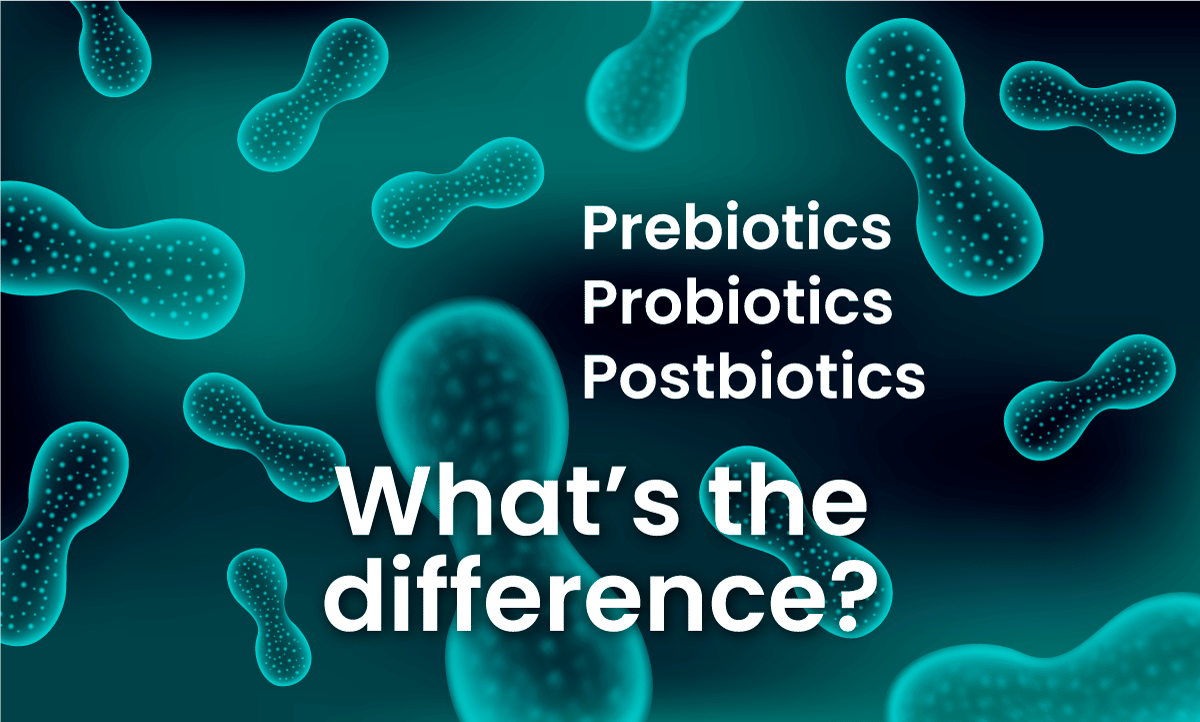
What are Prebiotics?
Prebiotics has been defined as non-digestible oligosaccharides that stimulate the growth and activity of a limited number of resident colonic bacteria (Gibson and Roberfroid, 1995), which can have a beneficial impact on factors, including digestive health. Two examples of prebiotics are Mannan-oligosaccharides (MOS) and Fructo-oligosaccharides (FOS). FOS, oligofructose and inulin are all oligosaccharides that occur naturally in plants, including sugar beet, onion, garlic, asparagus, banana, artichoke and chicory and help to maintain healthy gut bacteria.
Mannan oligosaccharides (MOS) and beta-glucans are prebiotics isolated from yeast cell walls and are collectively termed mannans. MOS are linked to proteins to form a mannoprotein layer localised to the external surface of the cell. MOS is not digested by digestive enzymes in the small intestine and reaches the large intestine structurally unchanged. Lactobacilli and some bifidobacteria metabolise MOS and FOS to form short-chain fatty acids (SCFA) – the preferred fuel source of enterocytes, playing a crucial role in supporting the health of the intestinal tract. MOS is less fermentable by intestinal bacteria than fructooligosaccharides (FOS). However, they provide beneficial effects surrounding digestive health, which will be considered in further depth later in this article.
What are Probiotics?
Probiotics are live microorganisms intended to maintain or increase the numbers of “good” bacteria (normal microflora) in the body. Most probiotics do not like elevated temperature, moisture, pressure and extremes in pH, making it challenging to incorporate them into pet food. The most common microbial species evaluated for probiotics for use in pet foods are Enterococcus faecium and Lactobacillus acidophilus (both lactic acid bacteria). The bacteria use fermentation to produce lactic and acetic acids, which lower intestinal pH and inhibit the growth of certain potentially harmful bacteria. Probiotics present an appealing approach to the treatment and prevention of many conditions because of their potential to be effective and safe and to result in decreased use of medicines.
What are Postbiotics?
Postbiotics are the bioactive compounds and beneficial metabolites made when friendly gut bacteria (probiotics) digest/metabolise/ferment prebiotic substrates. Commercially, postbiotics are produced through precise fermentation processes using specific microorganisms (e.g. yeast) and substrates. According to the International Scientific Association of Probiotics and Prebiotics (ISAPP), a postbiotic is a ‘preparation of inanimate microorganisms and/or their components that confers a health benefit to the host’. Postbiotics may contain intact inanimate microbial cells and/or fragments with or without metabolites/end products. Postbiotics aim to mimic the beneficial therapeutic effects of probiotics while avoiding the risk and challenges of administering live microorganisms. Consumer interest in postbiotics saw a surge of 91% from 2018 to 2019 (Kerry, 2020). With increasing awareness and focus, it is likely postbiotics claims will increasingly be seen in the pet food and treats market.
How does FOS affect Digestive Health?
FOS promotes the growth of friendly gut bacteria such as bifidobacteria and lactobacilli, although some inconsistent results have been observed in different studies. The feeding of dry food with 1% (w/w) oligofructose significantly influenced the faecal bacterial profile in healthy dogs, with increases seen in the numbers of bifidobacteria but also potentially pathogenic species, streptococci and clostridia (Beynen et al., 2002). Swanson et al. (2002a) reported the results of 2 studies, each carried out with 20 dogs. In the first study, FOS supplementation resulted in no significant changes in any of the faecal microbial populations evaluated. In contrast, in the second study, a significant increase in bifidobacteria and a non-significant increase in lactobacilli populations were seen. The reason for these differences is unclear, as the only difference between the studies was that the dogs in the first study were slightly older and slightly heavier than the dogs in the second study.
In another study in dogs, changes in faecal bifidobacteria numbers by dietary FOS supplementation was influenced by the protein content of the diet, with a decrease in bifidobacteria seen in dogs fed a ‘low’ protein diet and an increase in bifidobacteria seen in dogs fed a ‘high’ protein diet (Pinna et al., 2018). Regardless of the protein content of the diet, FOS supplementation increased the apparent total tract digestibility of several minerals (Ca, Mg, Na, Zn and Fe; Pinna et al., 2018). Similarly, Beynen et al. (2002) reported significantly increased magnesium and calcium absorption in dogs fed an oligofructose-supplemented diet. A possible mechanism of action for the increased mineral absorption is that a decrease in ileal pH (i.e. an increase in acidification) raises the solubility of the minerals, making them more available for absorption by the small intestine.
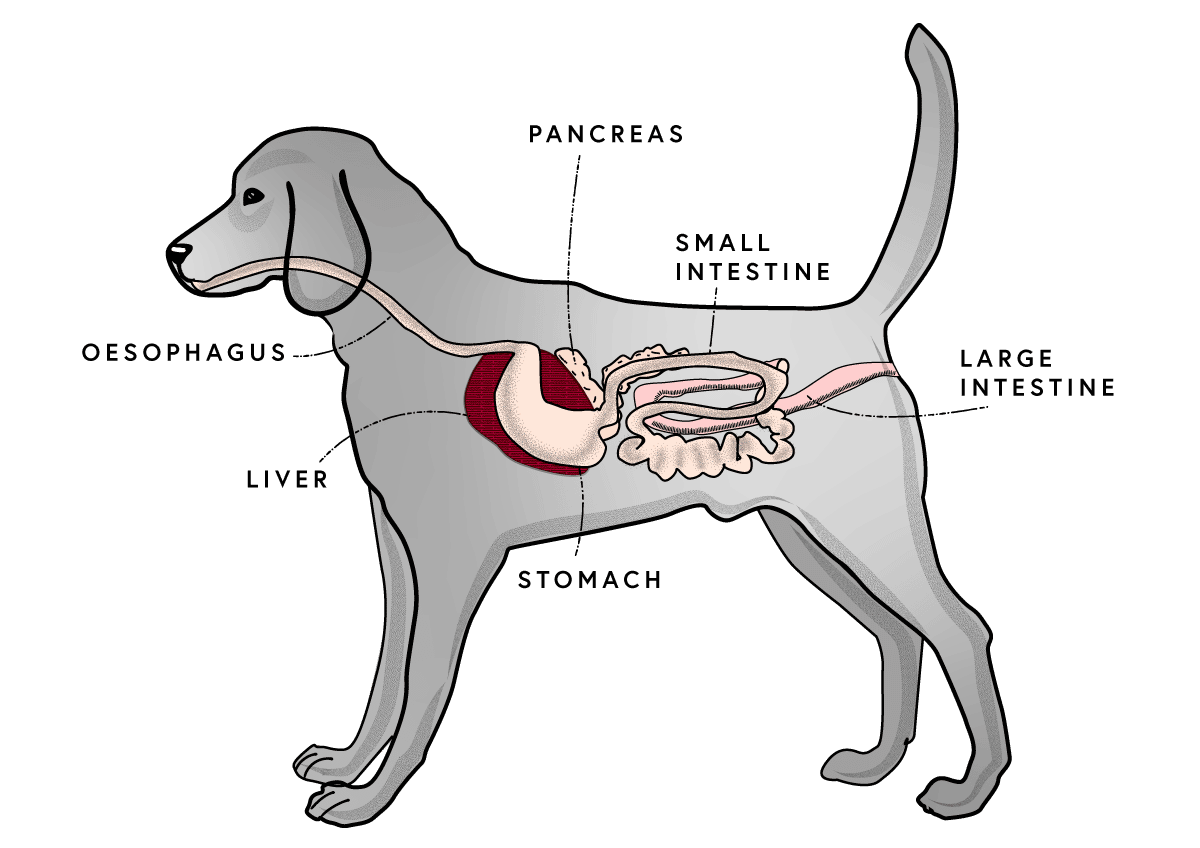
Dietary FOS cannot be digested by the small intestine and reaches the large intestine structurally unchanged, where they are metabolised by the intestinal microflora to form short-chain fatty acids. The short-chain fatty acids produced by this process in the gastrointestinal tract stimulate mucosal growth and epithelial cell proliferation within the small intestine (Thompson et al., 1996). Maintaining a healthy colonic mucosa is important to ensure nutrients are absorbed properly and a healthy gut barrier function is maintained. A number of studies have shown that dietary FOS/oligofructose supplementation results in an increase in faecal levels of short-chain fatty acids (acetate, propionate and butyrate) in dogs (Swanson et al., 2002b; Propst et al., 2003) and increased faecal butyrate in cats (Barry et al., 2010).
A study conducted by Barry and colleagues (2010) suggests that both FOS and pectin were effective fibre sources in promoting intestinal health in cats. Moreover, FOS had increased benefits when compared to pectin because the fructans appeared to produce a more beneficial microbial population than pectin. The study also concluded that the supplementation of fermentable fibres at 4% of a cat diet is successful in modifying stool protein catabolite and microbial concentrations.
How does MOS affect Digestive Health?
A study conducted by Grieshop and colleagues (2004) into the gastrointestinal and immunological responses of senior dogs to chicory and mannan-oligosaccharides suggests that MOS and chicory alter faecal microbial populations and certain indices of the immune system. Thirty-four senior dogs were randomly allotted supplements of either 1% chicory, 1% MOS, 1% chicory and 1% MOS or no supplementation for a 4-week baseline period, followed by a 4-week treatment period. An increase in food intake was noted in dietary supplementation with MOS or MOS and chicory, and this was due to an increase in fermentable fibre and a decrease in the energy content of the diet. Chicory supplementation was seen to increase fat digestibility, and chicory or MOS increased faecal bifidobacteria concentrations, while MOS decreased faecal E. coli concentrations.
A study designed by Kore and colleagues (2012) to assess the effect of dietary supplementation of MOS on nutrient digestibility, hindgut health indices and plasma metabolic profile found that supplementation of MOS at 1% of diet dry matter positively influenced feed intake, fibre digestibility and markers of hindgut health. The study used five adult dogs in a complete crossover design. The dogs were fed accordingly on a homemade diet alone or supplemented with MOS (at 1% level). A digestion trial conducted at the end of each period revealed that the intake of dry feed matter and other nutrients increased when supplemented with MOS. The digestibility of fibre was improved in the MOS-supplemented group, while that of other nutrients was not affected. The higher faecal concentration of total SCFAs due to MOS supplementation was also recognised, and addition of MOS tended to reduce faecal coliforms with an associated elevation in lactobacilli count compared to the control diet.
Summary
In summary, ‘biotic’ ingredients are becoming an increasingly popular inclusion within pet foods. It is evident there are great marketing opportunities surrounding their inclusion, which is supported by scientific research reflecting the benefits of their use.
References
Barry, K.A., Wojcicki, B.J., Middlebos, I.S., Vester, B.M., Swanson, K.S., Fahey, G.C. Jr. (2010) Dietary cellulose, fructooligosaccharides and pectin modify fecal protein catabolites and microbial populations in adult cats. J Anim Sci 88, 2978-2987. https://pubmed.ncbi.nlm.nih.gov/20495116/
Beynen, A.C., Baas, J.C., Hoekemeijer, P.E., Kappert, H.J., Bakker, M.H., Koopman, J.P., Lemmens, A.G. (2002) Faecal bacterial profile, nitrogen excretion and mineral absorption in healthy dogs fed supplemental oligofructose. J. Anim. Physiol. a. Anim. Nutr. 86 (2002), 298–305.
Gibson, G.R., Roberfroid, M.B. (1995) Dietary modulation of the human colonic microbiota: Introducing the concept of prebiotics. J Nutr 125, 1401-1412.
Grieshop, C., Flickinger, E., Bruce, K., Patil, A.R., Czarnecki-Maulden, G.L., Fahey, G.C. Jr.(2004) Gastrointestinal and immunological responses of senior dogs to chicory and mannan-oligosaccharides. Arch Anim Nutr 58:483-494.
Howard, M. D., Gordon, D. T., Garleb, K. A. & Kerley, M. S. (1995) Dietary fructooligosaccharide, xylooligosaccharide and gum arabic have variable effects on cecal and colonic microbiota and epithelial cell proliferation in mice and rats. J. Nutr. 125: 2604–2609.
Jenkins, D.J.A., Kendall, C.W.C., Vuksan, V. (1999) Inulin, oligofructose and intestinal function. JNutr 129, 1431S-1433S.
Kerry (2020) Digestive health demands for pets are growing. Are your products ready? https://www.kerry.com/products/animal-applications/pet-food-nutrition/pet-digestive-health-ingredients utm_source=petfoodindustry&utm_medium=topic_page&utm_campaign=functional_nutrition&utm_content=digestive_health
Kore, K.B., Pattanaik, A.K., Das, A., Sharma, K. (2012) Evaluation of mannanoligosaccharide as prebiotic functional food for dogs: Effect on nutrient digestibility, hind gut health and plasma metabolic profile. Ind J Anim Sci 82 (1): 81-86.
Pinna, C., Giuditta Vecchiato, C., Bolduan, C., Grandi, M., Stefanelli, C., Windisch, W., Zaghini, G., Biagi, G., (2018) Influence of dietary protein and fructooligosaccharides on fecal fermentative end-products, fecal bacterial populations and apparent total tract digestibility in dogs. BMC Veterinary Research. 14, 106-115.
Propst, E.L., Flickinger, E.A., Bauer, L.L., Merchen, N.R., Fahey, G.C.Jr., (2003) A dose-response experiment evaluating the effects of oligofructose and inulin on nutrient digestibility, stool quality, and fecal protein catabolites in healthy adult dogs. Department of Animal Sciences. 81:3057–3066.
Swanson, K.S., Grieshop, C.M., Flickinger, E.A., Bauer, L.L., Healy, H-P., Dawson, K.A., Merchen, N.R., Fahey, G.C. Jr. (2002a) Supplemental Fructooligosaccharides and Mannanoligosaccharides influence immune function, ileal and total tract digestibilities, microbial populations and concentrations of protein catabolites in the large bowel of dogs. J Nutr 132, 980-989.
Swanson, K.S., Grieshop, C.M., Flickinger, E.A., Bauer, L.L., Chow, J., Wolf, B.W., Garleb K.A., Fahey, G.C.Jr. (2002a) Fructooligosaccharides and Lactobacillus acidopilus modify gut microbial populations, total tract nutrient digestibilities and fecal protein catabolite concentrations in healthy adult dogs. J Nutr 132, 3721-3731.
Swanson, K.S., Grieshop, C.M., Flickinger, E.A., Healy, H-P., Dawson, K.A., Merchen, N.R., Fahey, G.C. Jr. (2002b) Effects of supplemental fructooligosaccharides plus mannanoligosaccharides on immune function and ileal and fecal microbial populations in adult dogs. Arch Anim Nutr 56, 309-318.
Thompson, J.S., Quigley, E.M., Palmer, J.M., West, W.W., Adrian, T.E. (1996) Luminal Short-Chain Fatty Acids and Postresection Intestinal Adaptation. JPEN 20, 338-343.

Sophia Parkinson
GA Pet Food Partners Pet Food Claims Expert
Sophia is GA Pet Food Partners Pet Food Claims Expert and is involved in checking partner claims, ensuring their labels and marketing materials meet regulations, and researching new and exciting raw materials. Sophia has an undergraduate degree in Nutritional Sciences, where she developed a strong interest in claims and labelling regulation. Briefly working in the Human Food industry before joining GA in 2020. She enjoys cooking and going for long walks with her miniature schnauzer, Dexter, in her spare time.
You may also like...
Article written by Sophia Parkinson
The pros and cons of AI in pet retail
You may have heard the letters "AI" or "AI Technology" frequently used in the media. From opening your phone with Face ID to interacting with [...]
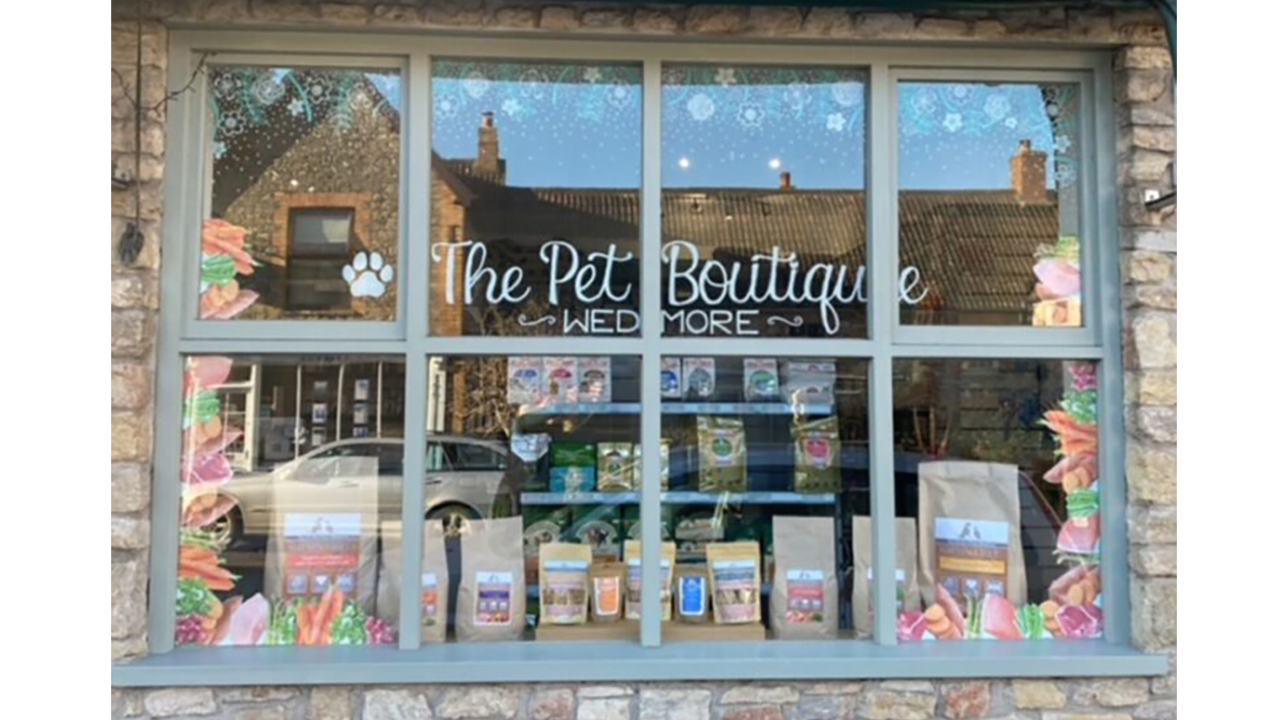
As pet food consumers become more knowledgeable about the products they buy their pets, they are becoming equally as knowledgeable about the number of avenues to purchase. Recent articles published in the media have led us to believe that consumers are increasingly purchasing products online. So how can pet stores differentiate in an online world if this is the case? Within this article, we will focus on how pet shops can keep their customers shopping in-store. In addition, the article will look at factors that pet stores need to consider if they are looking to move online as an extension to their current in-store offering.
Pet Store Offering
When it comes to a pet shop that wants to differentiate, it is crucial to think outside the box. Customers now have a variety of methods to shop for their pets, and your pet store needs to stand out to increase footfall and, ultimately, sales. A great way to showcase your offering is by ensuring the shopping experience is flawless. According to Super Office, 86% of buyers are willing to pay more for a great customer experience. A must for shopper experience is the shop’s layout. Is the shop easy to navigate? Can customers find products with ease? There needs to be a balance where the layout is straightforward but also spacious. Other areas to think about with your store’s layout are the colours of the walls, the lighting, and the point-of-sale items.
Another aspect of your pet store’s offering is the service and communication. For example, how colleagues interact with customers is an essential component of this. Having friendly staff seems like a no-brainer, but you’d be surprised at the number of employees that can come across as disinterested or even rude to customers. Welcoming colleagues will entice customers to return to your pet store rather than shopping elsewhere.
How can pet stores differentiate themselves?
This section will focus on ways in which your pet store can look to differentiate itself in an online world.
The key to success for any brick-and-mortar outlet is to offer unique experiences that cannot be replicated online.
Hosting in-store events
A great way to differentiate from online is holding in-store events for your customers. With these events, your pet shop can build a community, engage with customers and increase sales. Event Marketing Institute found that 87% of consumers claim to purchase a brand’s products after having attended one of their in-store events. This suggests that events are a fantastic way for your pet shop to differentiate from online businesses. Some examples of events include puppy socialising classes. This event teaches puppies to be trained and gets like-minded people in one place.

Remember – if you can get a puppy on your food, this could be a lifetime of custom. A puppy socialising event also presents an opportunity of showing best practices. Another popular event to consider is a nutritional evening. Here you can provide pet owners with insights about your products’ benefits and what makes them unique. This will no doubt attract customers to a pet shop because of the expertise that they are provided with.
Pet Grooming Service
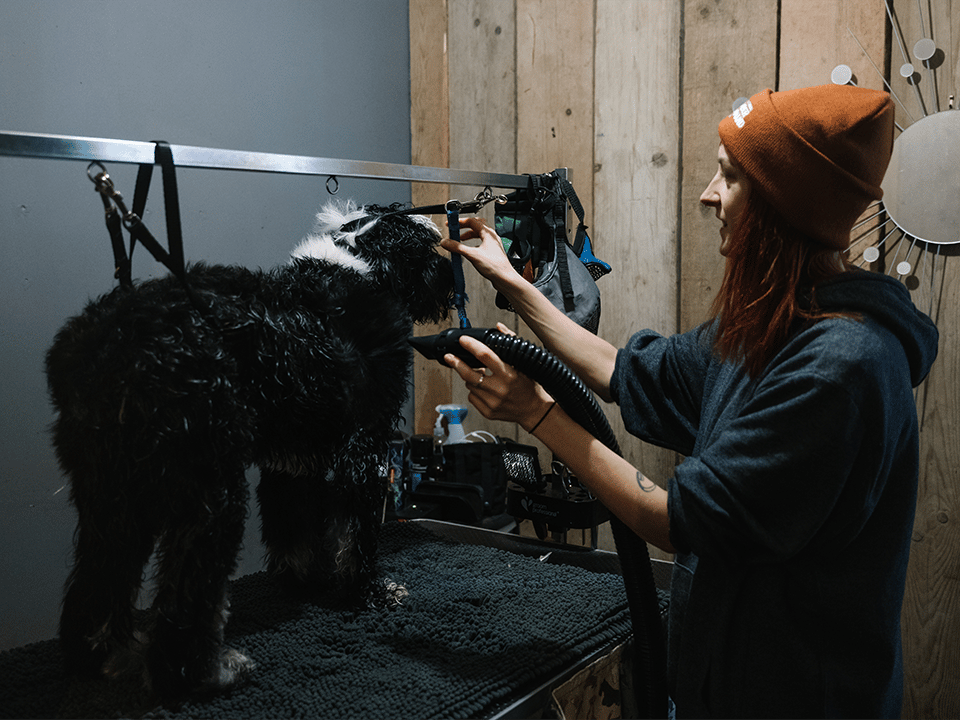
Pet Grooming is one of the most common services for pet owners to use, as many owners do not have the skills or knowledge needed to groom correctly. As a pet store, this is a fantastic way to differentiate from online retailers as this is something that can’t be offered online. A grooming service can be set up by inviting a groomer to trade in your shop or training to become one yourself as a pet shop owner or employee. With people wanting their pets to receive the best, the number of pets being groomed is only set to increase. A pet grooming service is only set to increase the footfall into your pet shop and provide the opportunity of further sales.
Displaying reviews in store
Displaying customer reviews of your business is another possible way to differentiate. Many believe that reviews are for online businesses. However, that is not the case and can be displayed in-store. For example, when a customer is in your shop, you could leave a book for them to review the products they buy from your shop. Once they have done this, you could display the reviews near your products that have been reviewed. According to Brightlocal, 69% of customers say reviews are as critical as personal recommendations when deciding whether to purchase a product.
Emphasising Speed and Convenience
With more people looking to receive their products quicker than ever before. Your pet store needs to ensure they stay with the times. Many online businesses now offer next-day delivery on items, saving people time as they don’t need to leave their houses physically. As a pet shop, you must emphasise to your customers that you can get their products to them as quickly as possible. Presenting a same-day delivery service is a fantastic way to retain customers. Not having a product in stock is the fastest way to lose customers. For your more popular items, it’s crucial to always monitor stock availability.
Opportunity to touch and smell products
A key differentiator for pet stores is that customers can come in-store and touch and smell products. This helps customers make a potential purchasing decision and make the right choice for their pet. According to TimeTrade, 87% of customers want to have an experience with a product before making a purchase. An example where a pet shop can allow customers to touch and smell their products is by offering samples for their pets to try before purchasing the entire product. This may be one of the most important differentiators between a brick-and-mortar store and online, with customers seeing an accurate value in trying products.

Merchandising

This plays a vital role in enticing customers to purchase from your store. For example, most customers want to find what they are looking to buy quickly; if they have issues with this, they may look to shop elsewhere. Pet store merchandising is essential to an easy shopping experience. A recent survey by PWC revealed that 65% of people in the UK believe the shopping experience helps people decide between buying options. In addition, a Walker report found that customer experience will overtake price and product as key brand differentiators.
Seasonal Focus
A seasonal focus is a great way to differentiate from an online pet business. Seasonal displays keep things fresh in your store, generate excitement and get shoppers into your shop. Think about what seasons appeal to your customers. Christmas, Halloween, Easter and Health and Wellness are some key events in the year that people celebrate and like to get their pets involved. A great example of a seasonal idea in the shop could be hosting a photo shoot at Christmas. Many pet owners love taking photos of their pets, so why not help your customers? This will get people excited to show off their pets in a card or pictures. A great incentive whilst their pet is having their photo taken is for the owner to shop in-store.
How can pet stores extend their offering online?
The overall theme of this article is to explain how pet stores can differentiate from online businesses. However, having an online presence as an extension to your pet store offering is also beneficial. Firstly, you can showcase what is happening in-store on your website or social media pages. This aims to entice potential customers to your store and drive more sales. Another advantage of investing in an online platform is that customers can view products at any time of the day. Pet shops are a great place for pet expertise. A pet shop can utilise its expertise by creating an online blog for people to find out information about nutrition, pet habits and challenges. Customers who find the information in a blog helpful will be inclined to see more details in-store.
Summary
To summarise, it is more important than ever for pet stores to keep their customers shopping in-store. Shops need to focus on their customer offering, starting with the look and feel of their shop. This includes store layout, colours and lighting, directly impacting the shopping experience. Recent research has found that 86% of buyers are willing to pay more for a great customer experience.
When it comes to differentiating from online retailers, there are many things that pet shops can do. Hosting in-store events is one method which represents a fantastic way to build a community and engage customers. Another excellent way for pet shops to stand out is by implementing a pet grooming service; this service is increasing as the number of people pampering their pets grows. Many people believe that reviews are for online businesses only. However, this is not the case and can be an effective way to encourage your customers to purchase a particular product in store.
References
Hamilton, H. (2019, August 9th). In-Store Retail Events: The Complete Guide. Retrieved from Lightspeedhq: https://www.lightspeedhq.co.uk/blog/best-retail-store-events/
Kulbytė, T. (2022, August 16th). KEY CUSTOMER EXPERIENCE STATISTICS YOU NEED TO KNOW. Retrieved from Superoffice: https://www.superoffice.com/blog/customer-experience-statistics/

Matthew Aiken
Marketing Communications Expert
Matt graduated in 2017 with an undergraduate degree in Business & Management. Here he discovered that he had a passion and interest in Marketing. In his spare time, he enjoys anything fitness related and getting outdoors. He also has a French Bulldog called Harley and a Persian cat called Bonnie Blue.
You may also like...
Article written by Matthew Aiken
The pros and cons of AI in pet retail
You may have heard the letters "AI" or "AI Technology" frequently used in the media. From opening your phone with Face ID to interacting with [...]
